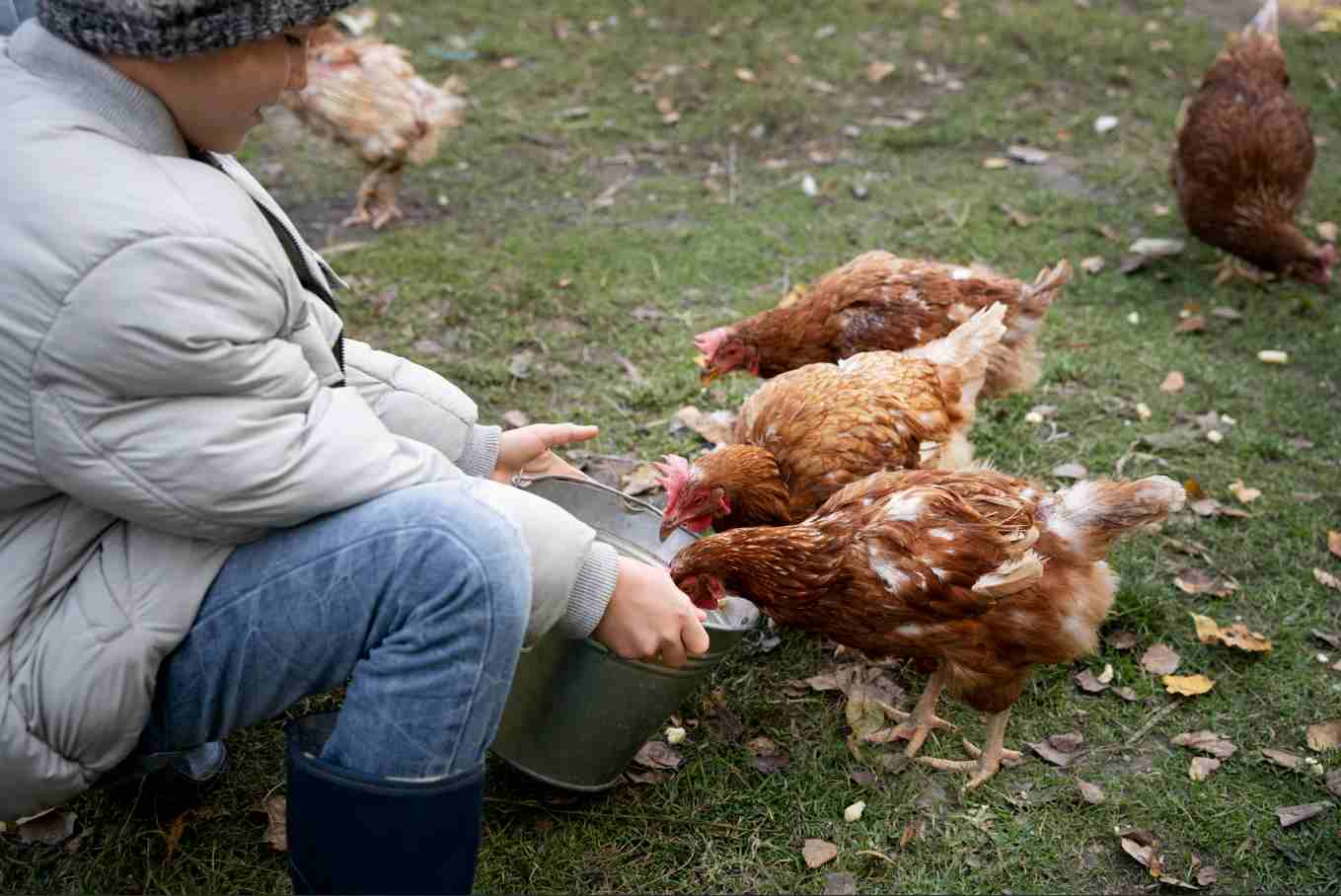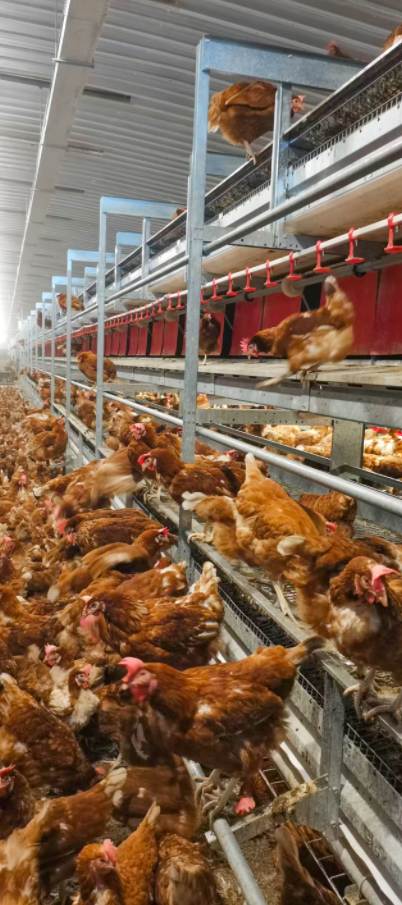What’s Up with Challenges in Modern Egg Production?
What Causes Laying Hen Losses?
Losing hens is a big worry in today’s poultry farming. It hits egg production hard and cuts into farm profits. Things like disease outbreaks, crummy housing, poor feed and stressful surroundings all play a part. Diseases and parasites can do a lot of damage if biosecurity isn’t tight. Also, packed or stuffy coops can cause heat stress, breathing problems and more fighting among hens.
Why’s Egg Production Dropping on Some Farms?
A drop in egg production can come from a bunch of connected issues. Stressful setups, wonky lighting schedules, bad nutrition, or older hens can all slow down laying. To boost egg-laying production, you’ve gotta focus on genetics, the coop environment and daily care. Without solid management plans, even top-notch breeds won’t lay as much.

How Can You Cut Down on Chicken Losses?
Pinpointing Common Causes of Hen Deaths
Disease and Parasite Control
Keeping diseases in check starts with staying on top of health checks and vaccinations. Parasites like mites or lice can make hens weak or anemic if you don’t deal with them. Regular cleaning and quarantining new birds are must-dos.
Stress from Environment and Crowding
Packed coops lead to fights over food, water and nesting spots. This ups the chance of injuries from pecking and stops hens from acting natural. Big temperature swings or bad airflow make stress even worse.
The temperature, humidity and harmful gases in the chicken house can be collected through ZEUS’s environmental controller. The computer uses the preset environmental standards to actively adjust the ventilation method according to the current environment.
How Housing Setups Affect Hen Survival
Old-School vs. Hen-Friendly Housing
Traditional stacked cages pack in a lot of birds but often limit movement big time. This can weaken bones from lack of exercise and raise deaths from stress-related sickness.
On the flip side, hen-friendly designs give each bird more room, add perches for chilling, dust-bathing spots for cleanliness and separate areas for eating and nesting. This cuts down on squabbles among hens.
Nutrition and Daily Care’s Role in Keeping Hens Alive
Good feed packed with protein, calcium, vitamins D3 and B-complex is key for keeping hens alive and boosting egg production.
ZEUS’s automated feeders make sure every hen gets enough without wasting food. Its feed trough is plugged in seamlessly to avoid wasting feed. The main supply of the drinking water system uses PVC40 water pipes to ensure sufficient water supply.
How to Ramp Up Egg Production in Hens?
What Drives Hen Laying Performance?
Genetics, Age and Breed Choices
Picking the right breed makes a huge difference in egg production. Some breeds lay more than others, but even top layers like Leghorns or ISA Browns slow down after about 18 months.
To max out egg production, start with a breed that fits your climate and goals.
Lighting Schedules and Photoperiod Control
Light messes with a hen’s laying cycle. Keeping 14–16 hours of light daily helps them lay regularly.
Using extra lights in winter can stop egg production from dipping when days get short.
How Does Stress Mess with Egg Yield?
Behaviors That Slow Down Laying
Stress from loud noises, predators, or even new caretakers can throw off laying schedules. Fights over pecking order also spike when hens don’t have enough space or things to keep them busy.
Give laying hens a certain sense of security and reduce stress reactions caused by environmental changes and other factors.

Meet ZEUS and the Multi-Tier Welfare System
What’s Special About ZEUS’s Multi-Tier Welfare System?
At ZEUS, we’ve rethought poultry housing with our Multi-Tier Welfare Layer System—a setup built to boost hen health and egg production efficiency.
Built for Natural Behavior and Comfort
Feeding and drinking zones are placed at different heights to get hens moving, jumping and flapping wings, which keeps them active and healthy.
Open Design for More Freedom
The door-free setup lets hens roam without restrictions, improving their overall well-being.
Functional Zones for Hen Health and Egg Production
Laying Area: Safe and Cozy Nesting
Side nest boxes come with soft pads and curtains. An automatic open/close feature keeps things clean and comfy for laying.
Rest & Activity Area: Encouraging Natural Moves
Split into upper and lower levels with lots of perches. Hens can move freely using steps and platforms. Adjustable dividers help manage flocks at different growth stages.
Feeding & Drinking Area: Easy Access to Food and Water
Feed troughs with chain feeding lines on both levels, protected by perch guards ensure clean access while promoting movement between zones.
Sand Bathing Area: Supporting Hygiene and Instincts
Dry littered floor areas let hens dust bathe, peck and socialize. Optional outdoor extensions give them sunlight, boosting natural rhythms.
Egg Collection System: Cutting Breakage, Saving Time
Eggs roll onto a collection belt and head to a front platform or central line—super efficient and easy on labor.
Manure Removal: Keeping Things Clean, Cutting Disease
Automatic manure belts haul waste out of the coop. This cuts down ammonia buildup, which can cause breathing issues in hens.

How Does the Multi-Tier Welfare System Boost Results?
Can Better Housing Really Up Egg Output?
You bet—housing that lets hens act natural cuts down stress hormones that mess with egg-laying. Create a suitable egg production environment helps laying hens lay eggs normally.
How Do Separate Zones Help Hens Thrive?
When hens have clear spaces for eating, resting, bathing, or nesting, they fight less over territory or resources. This setup keeps their routines steady and matches their natural rhythms.
What Behavioral Wins Come from an Enriched Coop?
Hens that perch at night sleep better and those that dust bathe stay cleaner—both lower disease risks. Enrichment also cuts down on feather pecking, which happens a lot in stressed flocks.
Mixing Best Practices with High-Tech Housing
Combining Smart Management with Tech
ZEUS weaves smart tech into our systems:
Tracking Health in Real Time
Sensors keep tabs on temperature swings or gas levels, letting automated controllers make quick tweaks.
Adjusting Feed and Water with Data
Data helps fine-tune feed schedules, preventing overfeeding while making sure all hens get enough nutrients across tiers.
Training Staff to Run Multi-Tier Systems Smoothly
We offer training to help farm staff get the hang of things fast—from moving flocks between levels to keeping automated parts like manure belts or lights in check.
FAQ
Q: What’s the best environment for laying hens to reduce stress?
A: An enriched environment that includes separate zones for nesting, feeding, resting—and offers freedom of movement—is ideal for reducing stress among laying hens.
Q: How many eggs can a healthy hen lay per year with optimal care?
A: With proper breed selection, lighting control, nutrition management—and welfare-focused housing—a healthy hen can lay between 250–300 eggs annually.
Q: Why are my hens not laying eggs consistently?
A: Inconsistent lighting schedules, poor diet quality, high-stress environments—or age-related decline—are common reasons why hens stop laying regularly.

